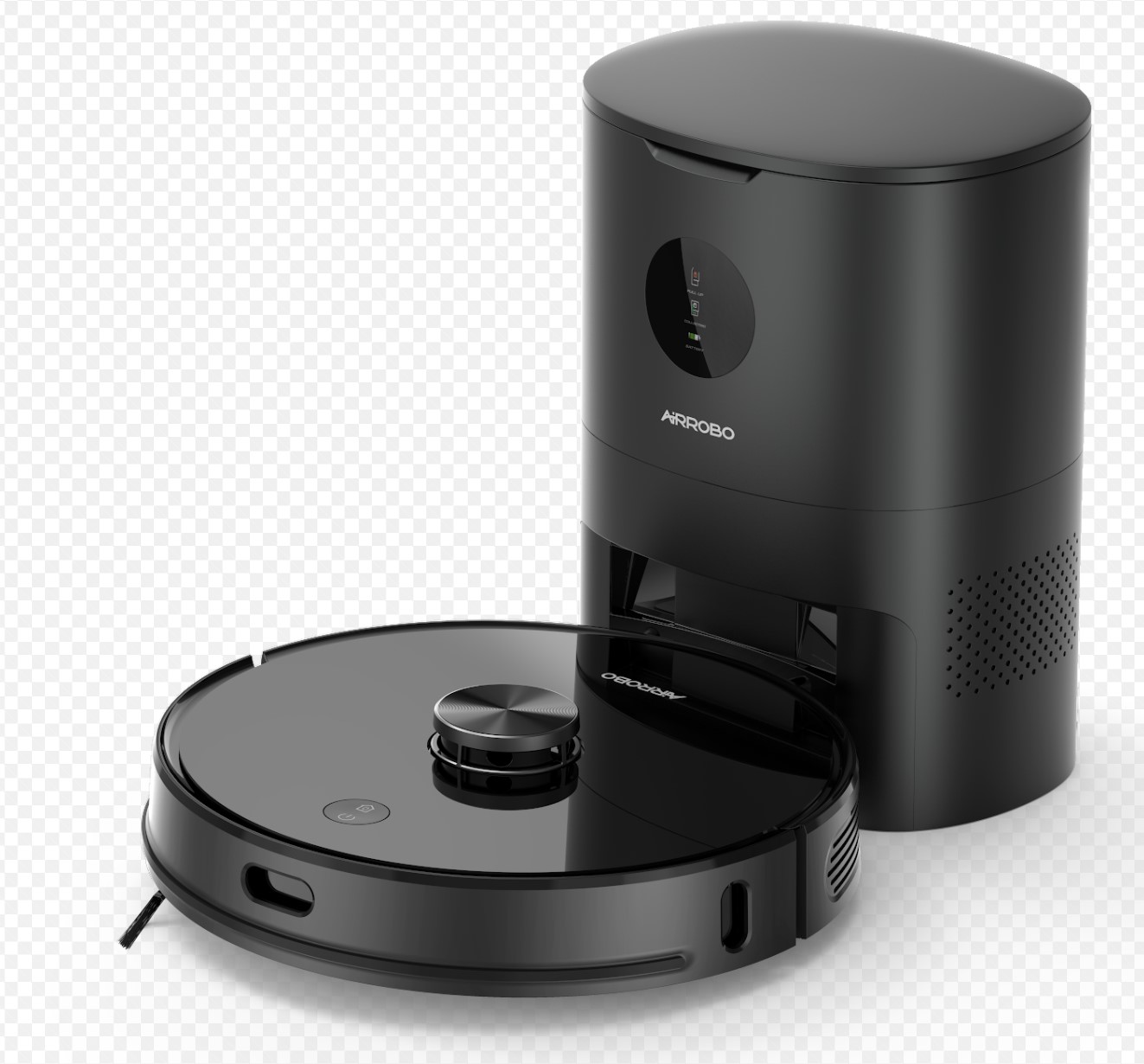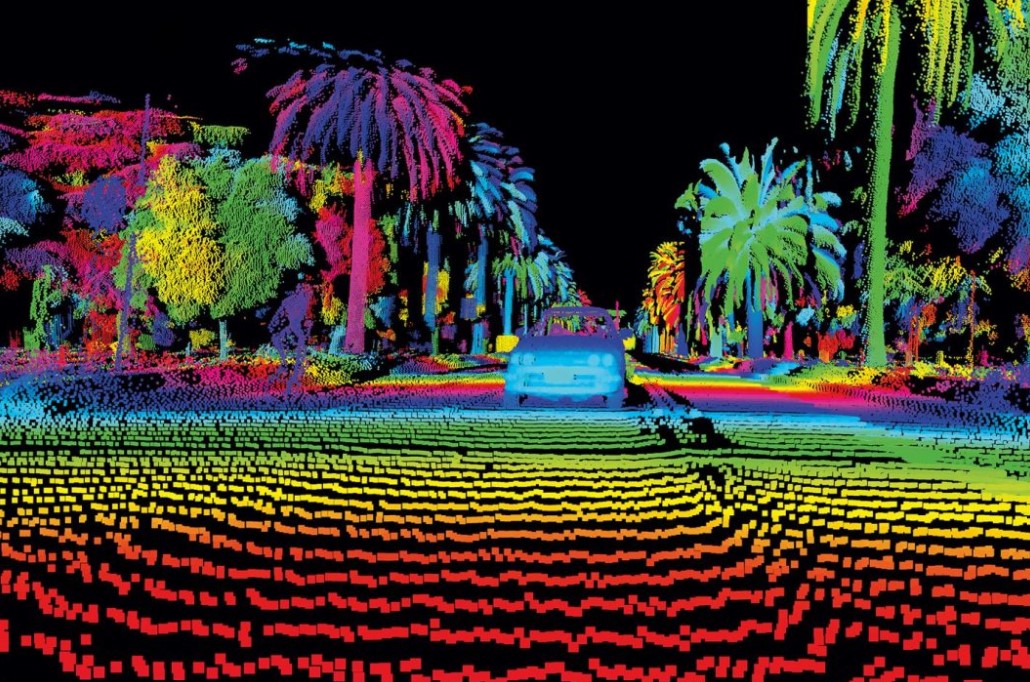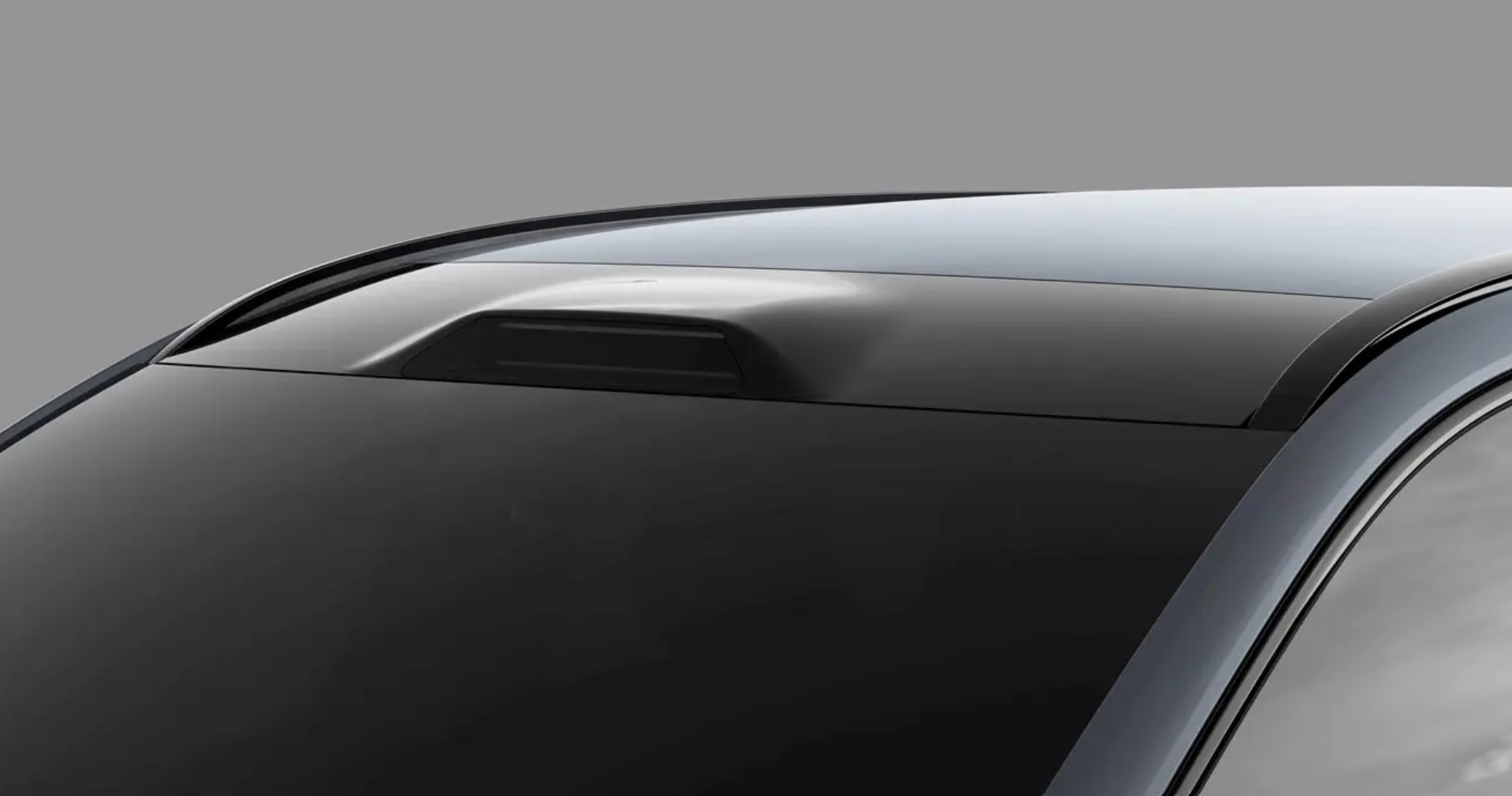It’s not often that Display Daily evaluates a robotic vacuum cleaner. In fact, we never have.

But when I had the opportunity to review the AirRobo T10+, a high-end robovac with sophisticated artificial intelligence; 23 sets of sensors; on-board mop with water tank for hard floors; and “automatic dirt disposal,” which is a docking station containing a big vacuum cleaner that vacuums out the the little vacuum cleaner so you don’t have deal with dirt or bag disposal for a nominal 45 days (Fig. 1).
 The AirRobo T10+ robot vacuum cleaner, with LiDAR unit on top, docks at its mother ship, which charges the robot and sucks the dirt out of it. (Photo: AirRobo). Click on the image for higher resolution.Okay, I know your Tesla doesn’t have an on-board mop, but I haven’t gotten to the good stuff yet. The AirRobo, along with an increasing number of competitors, has navigation based on LiDAR — light detection and ranging. In the T10+, the LiDAR is based on a Class I (safe to humans) infra-red laser that spins at six rotations per second. The reflected photons are detected and timed, and used to create a 3D point cloud of 2160 points, which a digital map is constructed that has a radius of 8 meters and an accuracy of a centimeter. The system that controls all this processes the data, localizes the vacuum cleaner in space, and responds to environmental inputs. The navigation works in the dark or in direct sunlight.
The AirRobo T10+ robot vacuum cleaner, with LiDAR unit on top, docks at its mother ship, which charges the robot and sucks the dirt out of it. (Photo: AirRobo). Click on the image for higher resolution.Okay, I know your Tesla doesn’t have an on-board mop, but I haven’t gotten to the good stuff yet. The AirRobo, along with an increasing number of competitors, has navigation based on LiDAR — light detection and ranging. In the T10+, the LiDAR is based on a Class I (safe to humans) infra-red laser that spins at six rotations per second. The reflected photons are detected and timed, and used to create a 3D point cloud of 2160 points, which a digital map is constructed that has a radius of 8 meters and an accuracy of a centimeter. The system that controls all this processes the data, localizes the vacuum cleaner in space, and responds to environmental inputs. The navigation works in the dark or in direct sunlight.
LiDAR systems for drones, developmental automotive navigation systems, industrial robots, geographical mapping, and other high-end applications may use multiple LiDAR units operating at higher rotations that produce denser and more extensive point clouds, and require sophisticated systems that process data at much higher rates (Fig. 2).
 A colorized LiDAR image reveals a vehicle’s 3D environment. (Image: Luminar Technologies) Click on the image for higher resolution
A colorized LiDAR image reveals a vehicle’s 3D environment. (Image: Luminar Technologies) Click on the image for higher resolution
And this brings us to Tesla. Well, first it brings us to General Motors. GM’s Super Cruise is widely regarded as the best semi-autonomous (L2) driving system in production, available in select Cadillac models. (Ultra Cruise, a considerably more sophisticated version, will be available in 2023 on select Cadillac models.) Super Cruise uses LiDAR mapping, radar sensors, cameras, and GPS information to automatically steer and brake on 200,000 miles (to date) of limited access highways in North America. The system also includes a driver awareness camera, which alerts the system if the driver’s eyes are closed or are directed at the Big Mac that has just fallen into his lap.
 Luminar Technologies LiDAR unit, as it appears in the upcoming Volvo XC90 electric SUV. The LiDAR can be hidden behind an IR-transparent panel, but Volvo wants to make the unit’s presence visible as part of its branding. (Image: Volvo). Click on the image for higher resolution.
Luminar Technologies LiDAR unit, as it appears in the upcoming Volvo XC90 electric SUV. The LiDAR can be hidden behind an IR-transparent panel, but Volvo wants to make the unit’s presence visible as part of its branding. (Image: Volvo). Click on the image for higher resolution.
Now we Come to Tesla
And now, really, we come to Tesla, which does not use LiDAR. Not only is Tesla leader Elon Musk dismissive of LiDAR, he also insisted on removing radar from Tesla’s semi-autonomous driving system in mid-2021. So, now, Tesla’s system relies only on cameras, which may contribute to some of the vehicle’s notorious accidents while in auto-driving mode. Although Tesla has multiple cameras, it does not have one for driver awareness.
The AirRobo? No accidents yet. It doesn’t bumps into objects as it navigates, unlike an older, much dumber robovac that does nothing but bump into objects (which is the way it was designed). The T10+ also has four sets of “cliff sensors.” I haven’t tried them on an actual cliff, but they work well in keeping the unit from tumbling down the stairs.
Since this was supposed to be, sort of, a review of the T10+, let me finish with some review-type information. AirRobo is a smart-home appliance brand of UBTech Robotics, which says it is the world’s largest AI and humanoid robotics company. The MSRP is $499.99, and the unit is available from Amazon. The unit can be controlled by remote control, by voice, or through the free Tuya app. With the Tuya app, you can see the map the robovac has created of its environment and you can set digital boundaries the robovac will not cross. The vac has four levels of suction, from which it will select automatically, or you can tell it which to use via the remote or the app.
In limited testing the vacuum has been highly effective. I don’t use it too much because I don’t want to put Marie, my wonderful cleaning lady, out of work. (KW)
And if you want to see another intriguing application of compact LiDAR, see this ‘self-navigating smart cane‘. Just before publication, I also spotted this new cinema camera from DJI that uses LiDAR for focusing. I(editor)
Ken Werner is Principal of Nutmeg Consultants. He consults for attorneys, investment analysts, and companies re-positioning themselves within the display industry or using displays in their products. He is the 2017 recipient of the Society for Information Display’s Lewis and Beatrice Winner Award. You can reach him at [email protected].

